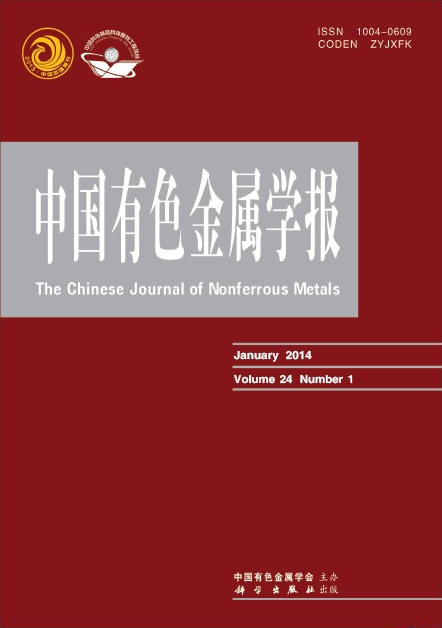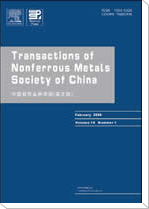(江苏大学 先进制造与现代装备技术工程研究院,镇江 212013)
摘 要: 采用硬度测试、金相观察、扫描电镜、能谱分析及腐蚀和摩擦实验的方法,研究钪、锆和锶对铸态镍铝青铜的硬度、组织、耐腐蚀性能和摩擦磨损性能的影响。结果表明:与未微合金化铸态镍铝青铜(Cu-8.57Al- 5.3Fe-4.6Ni-1.07Mn-0.63Zn)相比,钪、锆和锶复合微合金化铸态镍铝青铜(Cu-9.97Al-5.4Fe-4.52Ni-1.05Mn-0.62Zn- 0.045Zr-0.029Sr-0.057Sc)的相组成没有显著变化,都由α相、β相(高温相)和κ相组成,且各相均显著细化,合金硬度从212.1HV提高到240.7HV;由于组织细化,合金内优先发生腐蚀的共析组织(α+κIII相),其腐蚀通道产生概率降低,从而在3.5%NaCl水溶液中的均匀腐蚀和电化学腐蚀速率分别降低了.2%和17.8%(微合金化后的腐蚀速率分别为0.023 mm/a和0.231 mm/a);摩擦因数降低了23.4%(微合金化后的摩擦因数为0.019 3)。
关键字: 镍铝青铜;微合金化;显微组织;耐腐蚀性能;摩擦磨损性能
(Engineering Institute of Advanced Manufacturing and Modern Equipment Technology, Jiangsu University,
Zhenjiang 212013, China)
Abstract:The effects of scandium, zirconium and strontium on the hardness, microstructures, corrosion resistance and friction-wear properties of nickel-aluminium bronze ingot were investigated by means of hardness measurement, optical microscopy (OM), scanning electron microscopy (SEM), energy spectrum analysis and corrosion and friction experiments. The results show that, compared with the un-micro-alloying nickel-aluminium bronze ingot (Cu-8.57Al- 5.3Fe-4.6Ni-1.07Mn-0.63Zn), the micro-alloying nickel-aluminium bronze ingot (Cu-9.97Al-5.4Fe-4.52Ni-1.05Mn- 0.62Zn-0.045Zr-0.03Sr- 0.057Sc) has no significant change in the phase composition, which is composed of α-phase, β-phase (high-temperature phase) and κ-phase, and each phase is remarkably refined. The alloy hardness increases from 212.1HV to 240.7HV. The corrosion occurs preferentially in eutectoid region (α-phase+κIII-phase), but the refinement of the eutectoid microstructure reduces the probability of generating the corrosion channel. So, in 3.5%NaCl water solution, the micro-alloying nickel-aluminium bronze ingot presents better corrosion and tribological properties, the uniform corrosion rate and the electrochemical corrosion rate decrease by 5.2% and 17.8%, the corrosion rates of micro-alloying nickel-aluminium bronze are 0.023 mm/a and 0.231 mm/a, and the friction coefficient decreases by 23.4% (friction coefficient is 0.019 3), respectively.
Key words: nickel-aluminium bronze; micro-alloying; microstructure; corrosion resistance; friction-wear properties


